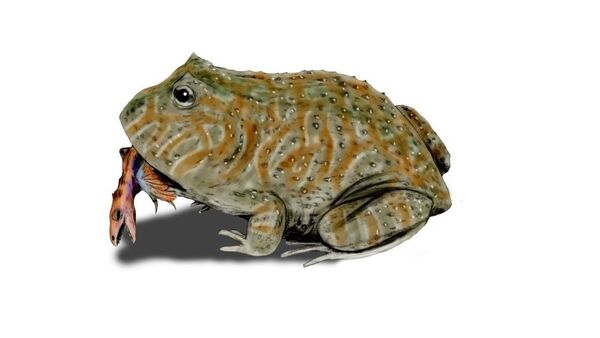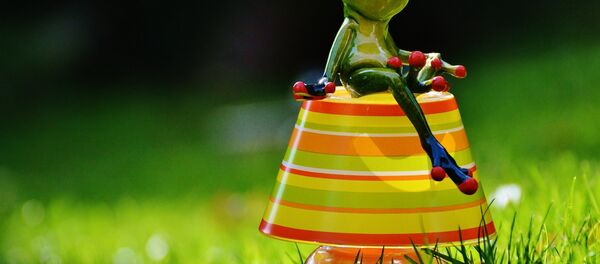Beelzebufo ampinga — the largest frog to have ever lived — boasted a bite strong enough to snap up small dinosaurs, according to a team of scientists.
They believe this "devil" frog probably also snacked out on crocodiles as it roamed around the jungles and tropical rain forests in Madagascar, some 70 million years ago.
Another reason #dinosaurs are extinct: Giant killer #frogs "would have been able to prey upon… dinosaurs": https://t.co/g0dVuDkyvI
— David Forrest (@NewsForrest) September 20, 2017
Although frogs are not generally known for their jaw strength, a team of British, Australian and American academics were determined to see if they could discover the actual bite force of the now extinct Beelzebufo.
They already knew that it ate some crazy stuff based on its size, but quantifying the strength of its bite would ultimately answer and provide a better understanding of its culinary preferences.
Recognizing its striking similar to the South American horned frogs, Ceratophrys cranwelli, also notably aggressive and capable of eating animals their own size, they agreed it would be the perfect model on which to carry out their study. The researchers used a custom-made force transducer, two plates covered with leather, as the starting point. As the frog bit down on the plates, they acted as scales to accurately sense the force of the bite.
今夜のゲンプクくんと、1年8ヶ月前のゲンプクくん。
— Tosh@かはづ庵 (@Tosh99H) September 20, 2017
思えば、コイツも大型熱帯魚店で売れ残って、安売りされてたっけ。Ceratophrys cranwelli pic.twitter.com/sOI6CmoIW4
The team found a Ceratophrys frog with a head width of 4.5 centimeters has a bite force of 30 Newtons, or approximately three kilograms (6.6 lbs).
This allows the frog, once it has captured its prey with its sticky tongue, to tightly secure the wriggling food between its mighty jaws, clamping down and not letting go.
"Unlike the vast majority of frogs which have weak jaws and typically consume small prey, horned frogs ambush animals as large as themselves — including other frogs, snakes and rodents. And their powerful jaws play a critical role in grabbing and subduing the prey," said Dr. Marc Jones, a researcher at the University of Adelaide and the South Australian Museum.
The scientists used a variety of different sized frogs, then compared the bite force of each to the width of their heads.
They put all this data into a computational model that spits out forces for a given size before discovering a frog with a six-inch wide head, like the Beelzebufo would bite with a force of 2213.7 Newtons, almost 500 lbs of force.
The average force of a human bite at the molar is about a third that number.
"At this bite force, Beelzebufo would have been capable of subduing the small and juvenile dinosaurs that shared its environment," added Dr. Jones.
The study, published in the journal Scientific Reports, admits the bite force of the Beelzebufo should be viewed with caution as it may have had a different jaw muscle setup and skull shape.


